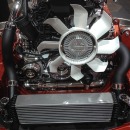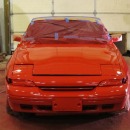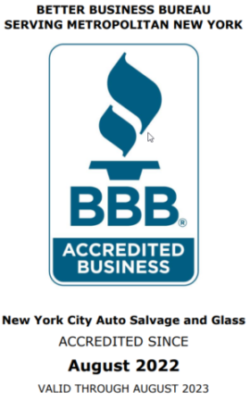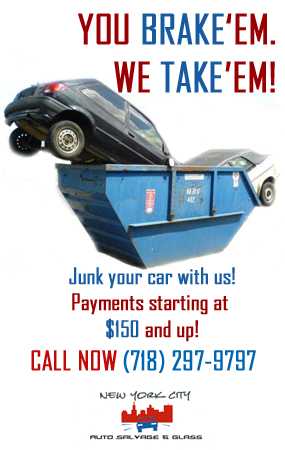7 Common Signs of Transmission Failure
Transmission is a mechanical component that is most complicated and less understood in your vehicle. It is built in a combination of advanced hydraulic and computer-programed electronics elements that giving the right amount of power which makes the wheels drive at a given speed.
Now, have you noticed strange whining, grinding or any unusual signs in your transmission? Ignoring problems until it’s too late is a bad practice just like a small repair today could be turned into expensive restoration further down the road. Therefore, learning these 7 common signs of transmission problems is your advantage, so let’s get started.
- Clunking, Whining and Humming – there are no specific sounds that a car provides but usually, it is described as clunking, whining and humming that even if you are not a mechanical expert you’ll recognize it. Excessive noise indicates differential or transmission wear, better check it out as soon as possible.
- Leaking fluid – one of the visible signs that you may easily recognize is the leak of the fluid. If you found liquid on your garage floor or in your driveway it could be a broken seal or any other transmission issues, failing to fix it will make the problem get worse over time.
- Burning Smell – having said that 90% of transmission failure are due to overheat, a 20-degree increase in fluid temperature will start to produce strange odor which indicates that your gearbox is possibly burning.
- Lack of Reaction- transmission was designed to response well when shifting gear. If it wouldn’t shift the way it should then it could be the shift cables, clutch linkage, or the computer system but remember, any delayed reaction in acceleration is another sign of transmission troubles.
- Engine light – when the sensor picks up abnormalities in the system the “check engine” sign will keep on flashing and it means a lot of issues, some are minor ones but if the transmission seems to be acting erratically better be quick and let the expert check your vehicle.
- Grinding or Shaking – a car is supposed to run smoothly but if you feel it shaking or seemed abrasive then it suggests that there is a problem with the transmission do not let it carry on, allow the mechanic to analyze the symptoms.
- Gear Slipping – either automatic or manual gear, the transmission is outlined to stay in a designated system. Therefore if it won’t perform the way it should or you are driving in a specific gear yet suddenly change, it manifests a gearbox problem.
Manufacturers always state a fact of preventive measures and maintenance schedules, following these rules will greatly reduce the chance of serious and dangerous damage to your transmission as well as your car.
If you are searching for transmission or any other car parts reach us at 718-297-9797 or look for New York City Auto Salvage and Glass we lend you a hand and keep your vehicle in the right condition.
Check Your Brakes Before It Freaks You Out
“Precaution is better than cure, “ does this saying apply to your car brakes maintenance method? Typically, car brakes come in many forms such as a drum, disc, anti-lock and emergency brakes and whatever your auto have, obviously, well-maintained brakes will refrain you from experiencing accidents that might freaks you out.
Consider these signs as RED flags
No arguments found with the fact that perfect car brake condition is essential, hence do not ignore these symptoms that show car brake failure:
- Dashboard brake light (red or yellow) is up
- Unusual noise such as grinding, squeaking and metallic squeal
- Shaking or vibration in your steering wheel
- Lack of fluid that holds backs the force of brake pads
- Softness of brake pedal that never leaves an inch in the floor when pressed
- Sharp bad odor or burning smell when pressing the brakes pedal
If you totally lose control of your car brakes and if this terrifying and dangerous situation occurs, do the following actions:
- Don’t panic, pump your brake twice or more often as this will build up ample pressure to stop
- Check for any obstructions behind the brake pedal, plastic cups, empty bottle or even car floor mats could be a sort of blockage, kick it out-of-the-way
- Shifting your gear is another option if you are into your 4th gear, lower it slowly one at a time, never rush the process as rapid adjustment will bring you into trouble
- Be watchful and take every chance of going to the right lane approaching the exit, full over, and use emergency brake if needed
- Stay focus and be alert, keep your eye on the road watch for what’s in front of you as well as the pedestrian and road barrier
- Let the other driver know what is going on, switch the hazard lights on and honk your horn or you can open your window to shout if it is necessary
- Call anyone you think can give help for this scenario if you know a mechanic who is willing to aid you better give a quick call
Lastly, make it a habit to check your braking system (pads, fluid, rotors and brake shoes) as these parts are needs to replace every few years or so. Now, worn out brakes that need to restore? Visit New York City Auto Parts and salvage brake parts that work just fine in your car. Or call at 718-297-9797 to have a quick response.
Read MorePeople Who Prefer Salvage Auto Parts Enjoy these Benefits, # 2 is convincing
Are you wondering why other people opt to used auto parts? Aside from the fact that brand new one has a substantial amount to get the payoff, there are many other reasons exist and play as essential, to understand a few see some list of benefits below and figure out which one knock and convince you.
- Financial value
Salvage auto parts definitely offer at a budget price a cost that is way far different from the brand new one yet the performance were quite similar. The first factor is saving money and if you are lucky enough, you can get an item with quality most likely if you buy one from reliable salvage yard
- On Hand
Finding auto parts might be a daunting task, sometimes you find it difficult to hunt a piece of the object (depending on what type of vehicle you have) in the spare parts market. While on the other hand, salvage auto parts usually available from used automobile yards, you can walk into any salvage yard supplier or local mechanic which has wide access from different types of vehicle which is perfect for your auto parts replacement
- Original Equipment Manufacturer (OEM)
Used auto parts are usually made and labeled OEM which perfectly fit almost all vehicles. It is a very safe option (match and fit) compare to aftermarket auto parts. Availability wise, OEM part is always on hand from the salvage yard, affordable and comes with a warranty.
- ECO- Friendly
This factor refers to the 3 R’s (reduce, reuse and recycle environmentally-friendly as this will save around 80 million barrels of oil, reduce the amount of energy for production of new replacement parts.
- Convenient
Used spare parts are widely accessible, therefore, you don’t have to spend more time of searching specific auto parts back and forth. Like if you are planning to do DIY spare parts replacement, then you can grab one anytime.
To sum it all, buying used auto car parts from the salvage yard is one great wise idea and so if you are in need of automobile recycle parts pick the phone and call New York City Auto Parts and Glass at 718-297-9797 and see what else we can offer.
Read MoreCheap and Easy Tips to Fix Auto Body Problems
Accidents are inevitable. One of the most common is car accidents that can cause severe damage to the car itself but also to someone’s life. And worst, death. Good thing is,most of the accidents are minor; however can leave damage especially to the outside of your car.
- Choose a reputable body shop
Many of the cars now are insured and they do offer body shops that they are affiliated with. But you have all the right to choose which body shops you wanted to seek help with. Be sure to go to refutable ones offering low cost but of high quality. You can check the Internet or ask from your friends about their reputation.
- Auto paint mismatch
Use your keen eye for this area. Paint color can be deceiving if you are close to your car. Make sure to view your car ten feet away to make sure that the paint really matches the original color. If not, then additional changes should be made and make sure that you feel satisfied before leaving the auto paint shop.
- Warning lights as sign of warning to you
When you pick up your car upon finishing a body repair, make sure that there are no warning lights indicated on your dashboard. These warning lights may include engine light, air bag light, coolant, or safety doors light. In an event of an accident, these warning lights are triggered and detected by the car’s computer system. Your car’s built in computer needs to be reprogrammed to cancel these warning lights. Additional electrical components may include in fixing this problem. It’s better than driving home worry free.
If you are looking for used quality original auto parts, please visit us at New York City Auto Salvage and Glass. Contact us at 718-297-9797. We will look after you!
Read More
Is Your Car Ready for Winter?
Since the winter cold wind is in the air, here are some handy winter car tips we provide for you.
The Battery. Have some time to check on your battery, this will save you precious time on starting your car or avoiding a bogged down car. Boost up your battery with distilled water routinely, so the cells don’t dry out. Keep in mind not to use tap water! Corrosion can happen during the winter time, which looks like white or green growth around the terminals; this should be wiped away. If it’s too thick to remove, look into the kitchen for some bicarbonate or soda water. Make a glue of this by including some water, then brush it onto the terminals and wash off with hot water. If that doesn’t work, it may be ideal to buy new terminals. Ensure you don’t do any of this work on the yard or in your carport. The acid in the battery will kill the garden or leave white stains on the driveway.
The Tires. All tires, including the spare, should be inflated to the correct pressure. Look in the car owner’s manual for the manufacturer’s specifications. During the winter time, because of the cold temperature tire pressure tends to be low on reading. The difference in the tire pressure affects the grip of the tires when driving.
The Windshield. Keep your windscreen clean during the cooler weather. Dirt on the windscreen can limit your visibility when driving towards a low sun. For maximum visibility, windows should be cleaned regularly with a dedicated cleaner for the windshield but you can make your own by using dishwashing liquid dissolved in water.
The Windscreen Wipers. Once the winter rains begin, it’s important your wipers are up to the job. If they are perished or cracked they’ll be unable to wipe the glass effectively, causing streaks, smearing, and loss of visibility. They crack because of the cold temperature. Replace the wiper rubbers when the blades fail to wipe clean the windshield or chatter across the glass. When you wash your car, lift the blade from the screen, rinse with clean water and look for evidence of deterioration. Check if the reservoir bottle has a sufficient fluid level.
Put your car in the Garage. Try to park your vehicle under cover at night and try to avoid parking your car on the lawn overnight as damp rising from the lawn condenses on engine and ignition parts leading to current leakage. Condensation forming on the underside of the bonnet can lead to rust development.
Now you know this winter tips, be ready to hit the road and never get left behind. If you happen to find replacement parts for your car, visit us at New York City Auto Salvage and Glass. We will look after you. Just dial 718-297-9797.
Read More








